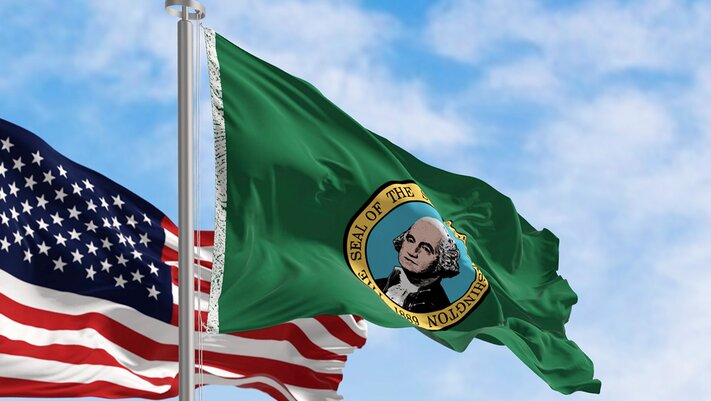Democrats Push to Replace George Washington on State Flag: A Controversial Move for Change!
In a significant move towards inclusivity, progressive lawmakers in Washington state have introduced House Bill 1938, which proposes the removal of George Washington from the state flag. This bill aims to create a new design that represents the diverse values and identities of all Washingtonians, marking a potential shift in the state’s symbolic representation.
The introduction of this bill has sparked discussions about the importance of state symbols and their relevance to contemporary society. Here’s what you need to know about House Bill 1938:
- Purpose of the Bill: The primary goal of House Bill 1938 is to establish a committee responsible for designing a new state flag that resonates with the diversity and values of Washington’s residents.
- Committee Formation: The bill stipulates the creation of a committee that will consist of a diverse group of individuals, ensuring that various perspectives are represented in the flag design process.
- Reflection of Diversity: Lawmakers argue that the current state flag, which prominently features George Washington, does not adequately reflect the state’s diverse population and history.
- Public Involvement: The committee will likely engage the public in discussions and solicit feedback on potential designs, promoting community involvement in the decision-making process.
As discussions around the bill continue, various stakeholders have expressed their opinions. Supporters of the bill argue that a new flag design could foster a sense of belonging and representation among all Washingtonians. They believe that symbols should evolve to reflect societal changes and promote inclusivity.
On the other hand, opponents of the bill may feel that removing George Washington from the flag could erase historical significance. They argue that Washington’s contributions to the founding of the United States are vital and should not be diminished. This debate highlights the complex relationship between history, representation, and identity in modern America.
The proposal to redesign the state flag is part of a broader trend observed in several states and communities across the nation. Many regions are reevaluating their symbols and monuments to ensure they represent all citizens equitably. This movement often stems from a growing awareness of historical injustices and the need for more inclusive narratives.
In conclusion, the introduction of House Bill 1938 marks a pivotal moment in Washington state’s legislative landscape. As lawmakers and the public grapple with the implications of this potential change, the outcome could set a precedent for how states approach issues of representation and identity in the future. This is an evolving story, and updates will follow as the bill progresses through the legislative process.
Stay tuned for more developments on House Bill 1938 and its impact on Washington’s state flag and identity.






